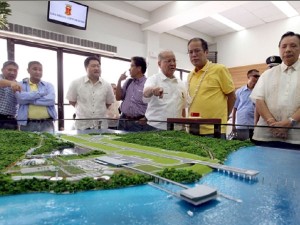By JIMS VINCENT T. CAPUNO

840-m Dual Zipline
MANILA, Philippines -- Dahilayan Adventure Park in Manolo Fortich, Bukidnon is one of the most visited places in the country. It lies at the foothills of Mount Kitanglad Range which is declared as a national park and is more than 4,000 feet above sea level.
The park’s dual zip-line is touted to be the longest in Asia. It consists of two cables each 840 meters long from point to point, with safety cable also 840 meters long. Total length of cables is 2,460 meters. Elevation drop is 100 meters with estimated speed ranging from 60 to 100 kilometers per hour.
The Pine Grove Mountain Lodge is the biggest building at the Zip Zone. Here, visitors and guests can eat, relax, or opt to stay in one of its fine rooms, which, incidentally, was where KC Concepcion and Sam Milby filmed parts of the movie Forever and a Day.
The zip line may be the longest and scariest, but the park itself is the most beautiful, greenest, and cleanest this part of the world.
Aside from it being a smoke-free park, its lush greenery of pine trees, Bermuda grass, flowering plants and other ornamentals are well-maintained. One of its main come-ons is a small plane at the center of the main entrance. Overall, the surrounding is perfect for both children and adults.
The Forest Park is an ideal destination for a family. There is a playground full of replicas of life-size animals. It also offers extreme adventures. It has an All-Terrain Vehicle that can be rented and zorb balls which are used to roll down the hill. Horseback riding and mini-boat ski ride are also available. Children will enjoy doing the 21 platforms tree top adventure, a 175-meter obstacle course adventure.
Have a picnic amongst life-size replicas of tigers, tortoise, crocodiles, gorillas, giraffes, and hippopotamus, to name a few.
Victor, the first of the Paras siblings who bought a property in Dahilayan, developed his place into a wedding venue and called it Dahilayan Garden and Resorts. Aside from weddings, the place is also good for fishing since there is a pond inside the resort. Children will enjoy riding the aqua balls.
Another Paras sibling put up a restaurant and called it The Cow Boy Grill. A sister, on the other hand, created a beautiful garden in her lot which she called Botanica Café and Garden that serves coffee, pasta and salads to visitors.
If you want to experience extreme adventure, then try the Dahican Adventure Park experience. In some instances, the area gets covered with fog, so as a precaution, the management reminds: “Due to sudden weather and temperature change, everyone is requested to bring their winter coats and jackets.”
How to get there:
Dahilayan Adventure Park is about one hour and thirty-minutes from Cagayan de Oro City. From the city, take the Davao-Bukidnon Highway, right on the Alae Junction, proceed 25 kilometers, passing by the Del Monte Camp Philipps and pineapple plantation. Look around for markers that indicate where the adventure park is.





